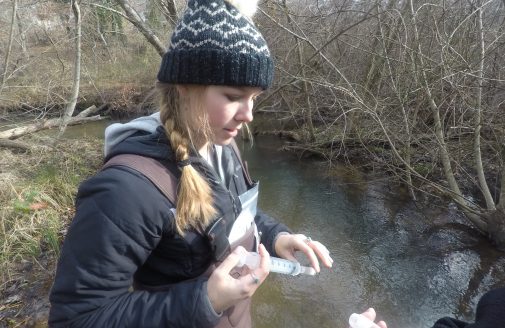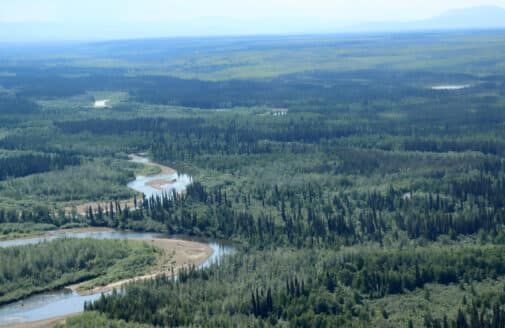Staff Spotlight: Dr. Anna Liljedahl
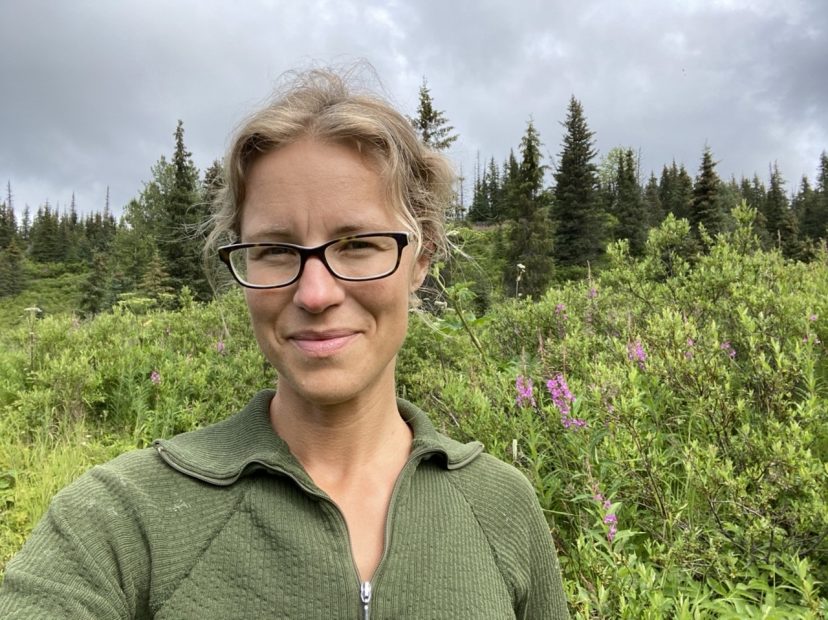
Woodwell Climate Research Center (formerly Woods Hole Research Center) Associate Scientist Dr. Anna Liljedahl studies the impact of climate change on the storage and movement of water in the Arctic. She joined Woodwell Climate in March, and also holds an Affiliate Professor appointment at the University of Alaska Fairbanks. Anna lives in Homer, Alaska, where she works closely with the community through organizations such as the Alaska Institute for Climate & Energy, Kachemak Bay Conservation Society, and Homer DrawDown.
Why did you pursue a career in science?
I’ve always enjoyed being out in nature. I spent lots of time in the forest with my Gotlandsruss pony growing up in northern Sweden. I decided to study water because it is the foundation of our world and it makes life on Earth possible. I wanted to learn more about water and even seek new knowledge in cold region landscapes. Snow and ice just had to be involved!
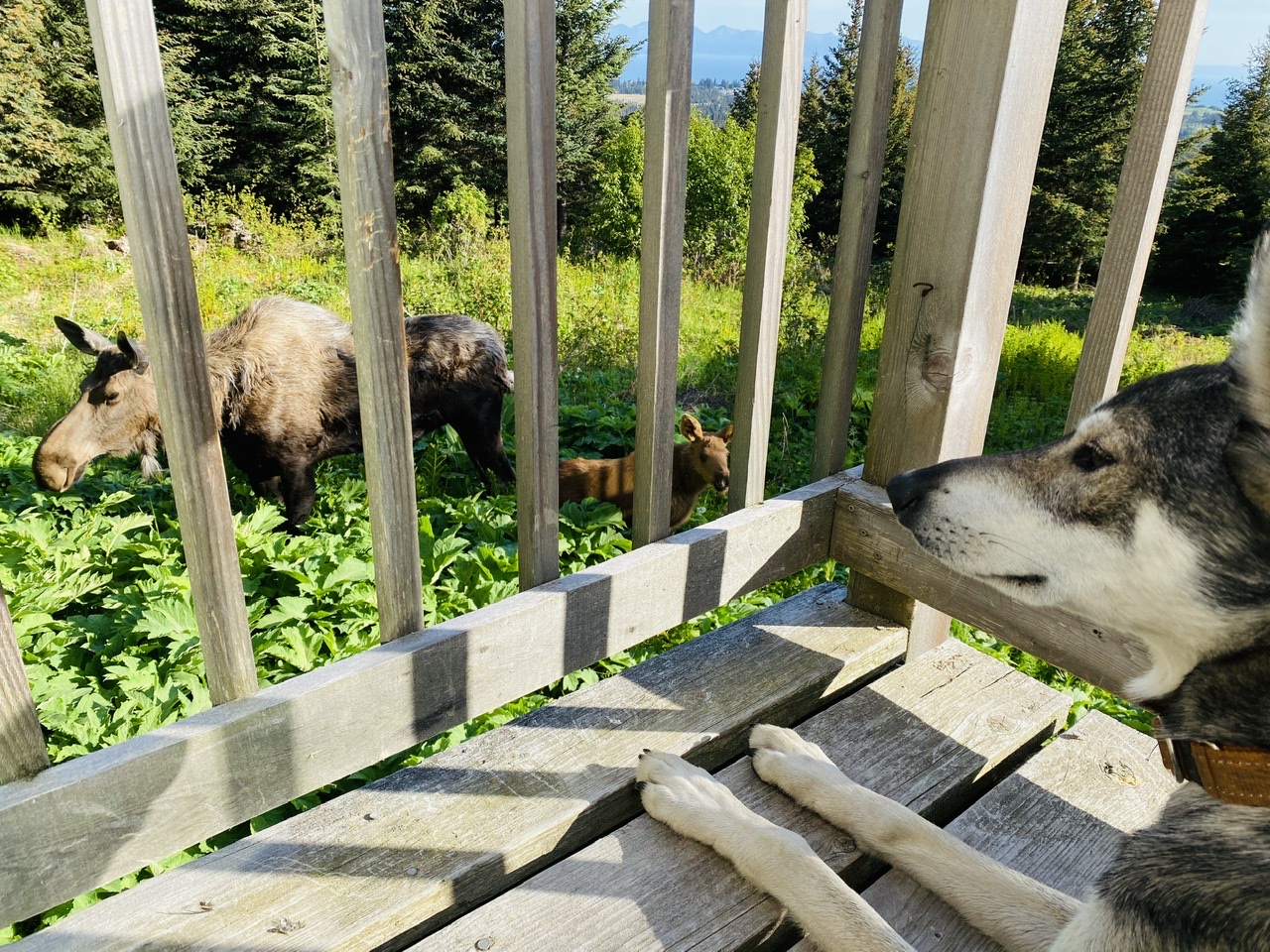
Above: Dr. Anna Liljedahl’s pet husky checks out the moose visiting the yard.
What questions does your research aim to answer?
My funded work so far has aimed to understand what climate warming does to the hydrologic cycle in permafrost and/or glacier affected watersheds, and why. My next chapter, which I started by joining [Woodwell Climate], will also include how we as a society can adapt to the challenges that come with an altered water cycle, what we can do to not only survive but also thrive and do so with our environment, to grow as a community with the land wherever we may live. I want to work with the people of Kenai Peninsula to explore what we can do together to address hazards such as landslides and tsunamis linked to retreating glaciers and how we can help the salmon survive in the warming streams. Salmon are part of Alaska’s soul, as are the glaciers, and both are challenged by a warming climate.
What brought you to [Woodwell Climate]?
[Woodwell Climate]’s mission to make science useful to the public and the fact that it involves going beyond doing science for the sake of science appealed to me. I like that I do not have to worry about losing my job if I write or say something about the fossil fuel industry and that it is a 100% research institution. And I love that the Center allows me to live in beautiful Homer, Alaska!
If you could work on any climate science topic outside your current research area, what would that be?
I’ve taken the first steps already! I’m reaching out to people I want to work with, if they did not already inspire or invite me to join them. One day, I hope to team up with health experts because I am curious about climate change “trauma”, whether it is about losing the salmon in your stream or losing your home to eroding permafrost.
What’s your favorite climate-related creative work (book, movie, artwork, etc.)?
The Wave. It’s not so much a climate-related movie, but the hazard exists here in Alaska with landslides triggering large tsunamis due to glaciers retreating, leaving unstable ground exposed above deep fjords. Watching that movie the day the New York Times article came out about our discovery of the potential Barry Arm landslide made the hazard human to me. It is odd how your science neuron otherwise tends to think about science so objectively.
Latest in Water
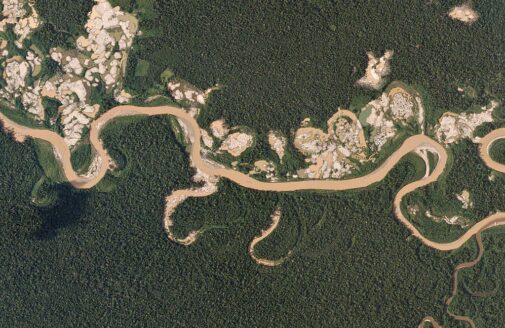
- In The News
Gold mining causes long-lasting damage in the Amazon rainforest
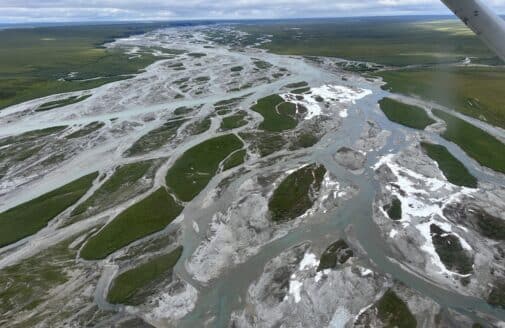
- In The News




